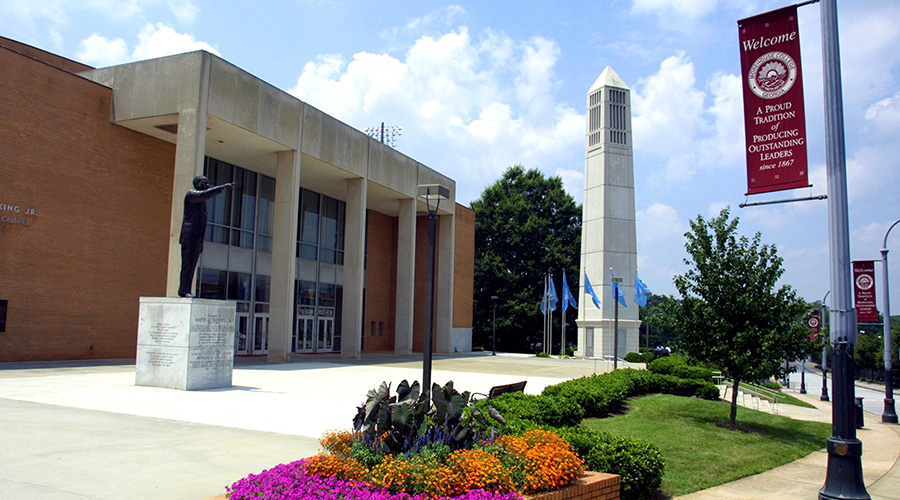
How Morehouse College Reduced Energy Consumption by 30 Percent
The college was participating in the U.S. DOE’s Better Buildings Challenge and met its goal four years ahead of schedule. October 24, 2024
By Jeff Wardon, Jr., Assistant Editor
As the push for greener buildings grows stronger, many facilities find themselves looking for methods to attain their sustainability goals.
Operating on more than 1.6 million square feet across a 60-acre campus, the Atlanta-based Morehouse College found ways to reduce its energy usage by 30 percent. This feat would even get the college officially recognized by the U.S. Department of Energy’s (DOE) Better Buildings Challenge for achieving its goals ahead of schedule.
Addressing energy efficiency
There was already some intentional work being done at the college around energy reduction, according to Shadeed Abdul-Salaam, director of sustainability at Morehouse College. Before partaking in the Challenge, Morehouse College completed a National Renewable Energy Laboratory (NREL) energy study and also implemented low-flow water efficiency measures.
In 2023, the president of the college decided to up the stakes and committed the organization to the Better Buildings Challenge.
“So, we emphasized that we’re not only going to live it out in our words but also act on reducing greenhouse gases and being able to reduce our carbon footprint here at the college,” says Abdul-Salaam.
The first aspect the college focused on was addressing its deferred maintenance, meaning that before any new technologies were implemented, existing problems had to be taken care of first. These entailed issues that impacted the building envelope, such as replacing windows, HVAC mechanicals and control systems.
Once that was completed, Abdul-Salaam says the college began looking at its energy usage by identifying the highest impact areas and most utilized spaces on the campus.
The college began addressing its high energy consumption by replacing five air handling units, upgrading HVAC controls across 11 buildings and ensuring that they were high efficiency.
“For example, in our biology and chemistry building, we know that the occupants are going to be in at 7:30 a.m.,” says Abdul-Salaam. “With our new efficient units in our building with energy efficient windows, it requires our system roughly 30 minutes to get our building up the temperature for reasonable comfort for its occupants. Now utilizing smart controls, we can have our system kick in at about 6:45 a.m. so it doesn't have to run from 4 a.m. to 7:30 a.m. to provide occupants with comfortable temperatures.”
Abdul-Salaam adds that his organization’s goal is to try to see how they can address those type of needs in air handling with their smart controls and increase efficiency.
Another aspect the college addressed for energy efficiency was lighting. The facility department installed LEDs throughout the campus to replace older lighting fixtures. Additionally, Morehouse College is looking at projects involving renewable energy, and one project that will address this in the future is by installing a solar canopy array over the college’s three-acre parking deck.
“The goal for that is for us to be able to use solar energy to be a resiliency hub for Morehouse College, as well as the Atlanta University Center, which is where we sit,” says Abdul-Salaam. “So, our goal is to utilize this solar energy that we capture and then be able to reduce some of those energy inputs into our buildings to reduce the impact of energy burden. We also want to utilize this renewable energy piece to help elevate our initiative of being more sustainable.”
Challenges faced
Implementing sustainable initiatives is never without challenges, especially when the facility in question has historic elements that need to be maintained. With the campus itself being roughly 157 years old, there are some older buildings located on it.
One solution the college wanted to implement was to replace the older windows with newer, more energy-efficient ones. However, there was one problem with the windows already in place: they weren’t standard sized, and most were custom made. This meant Abdul-Salaam had to reach out to different manufacturers and see who the college could partner with to put in new efficient windows.
“We were looking at around 90 custom windows that weren’t standard size, so that was definitely a challenge,” says Abdul-Salaam. “The benefit is that once we upgrade these windows, it's going to increase efficiency markedly. So, what we'll do is work with our students to be able to monitor our energy usage and energy burden in some of these historic buildings around campus. This is so they'll be able to see the impact of just addressing items like these windows.”
The other challenge Morehouse College faced was the upfront costs for sustainable technologies, which can be a hurdle for organizations considering a change. Abdul-Salaam adds that for his organization to justify purchasing these technologies, they would have to partner with corporations and grants so they can execute their plans.
Even with the challenges the college faced, Morehouse is still committed to attaining their goal of eventually becoming net-zero.
“We welcome the challenges because we know that we must live up to our motto and our creed, which is to create a better and more just society for all,” says Abdul-Salaam.
Jeff Wardon, Jr., is the assistant editor for the facilities market.
Next
Read next on FacilitiesNet












